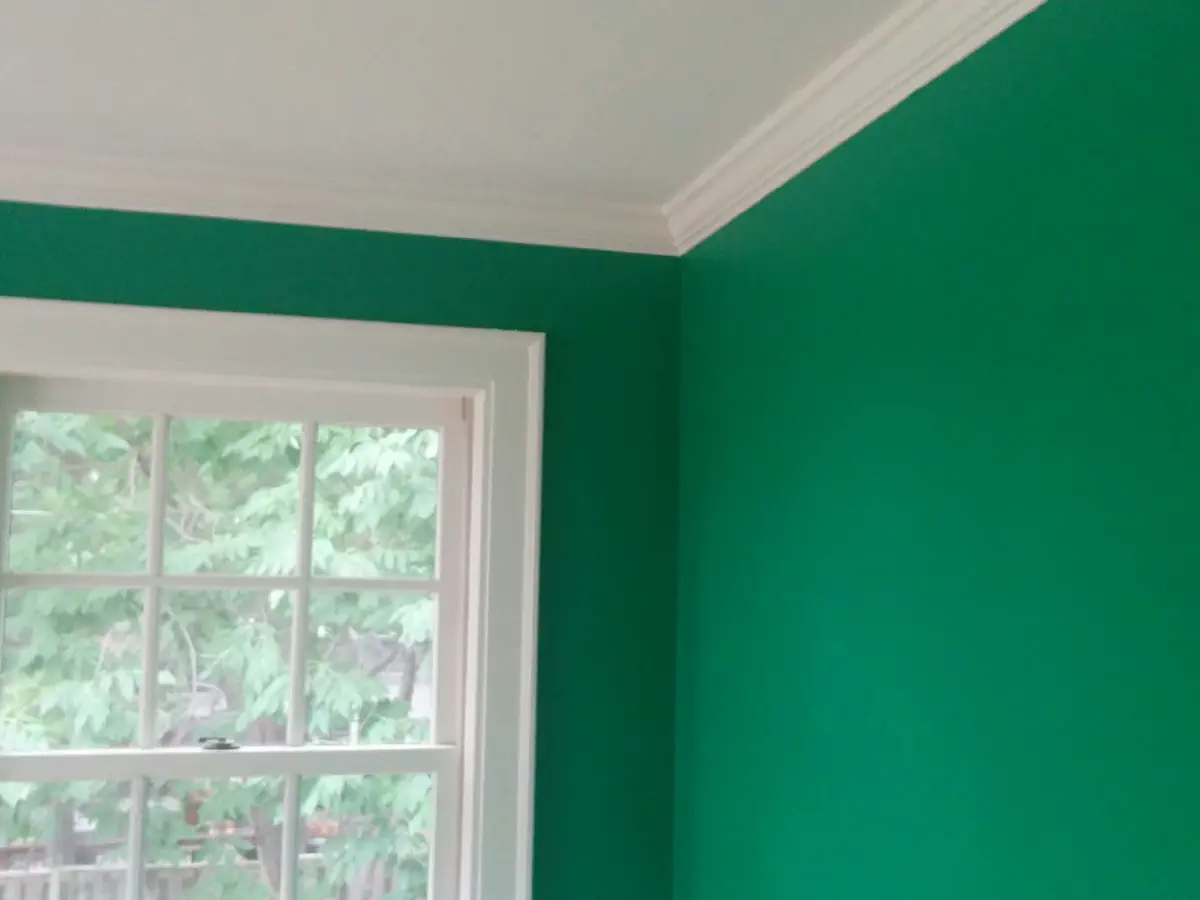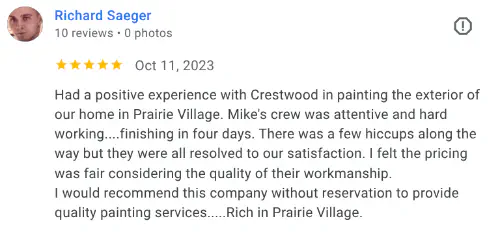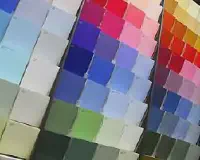A properly painted surface should appear even and consistent under normal lighting and typical viewing conditions.
What Makes a Wall “Properly Painted”?
It’s not about perfection—it’s about consistency, coverage, and how the surface looks under finished lighting from a normal viewing position.

Paint quality isn’t just about color. A properly painted wall looks uniform in texture, sheen, and coverage, with no obvious flaws or thin spots.
These expectations aren’t arbitrary—national industry standards exist to define what a good paint job looks like. Our role is to meet those standards while also matching the needs of the space and the history of the walls.
Prep Work: Start with a Conversation
Clear expectations about holes, cracks, and repairs help prevent surprises once the painting begins.
Many of the flaws we see come from previous projects. Part of what we do is clean up what others left behind.
What Needs to Be Fixed?
Does “patch the wall” mean fix every nail pop and bump—or just the big holes? Your idea of smooth may differ from your painter’s. That’s why it’s essential to talk about what level of prep you expect.
See our related notes on plaster and drywall repair to understand the scope of work when fixing aged or uneven walls.
Align Budget and Expectations
Some customers want every flaw corrected. Others are fine with good-enough. Either approach is fine—what matters is that everyone agrees from the start.
The Trouble with Surface Imperfections
Roller fuzz, dried paint flecks, and inconsistent texture all show through if not addressed first.
Sanding Without Overdoing It
Old paint often leaves behind texture: bits of roller lint, small bumps, or dried flakes. These need to be sanded smooth before repainting.
But too much sanding can flatten the roller stipple. A smooth patch in the middle of a subtly textured wall can be just as noticeable as the thing you meant to fix.
Focus on Consistency
The goal isn’t a museum-quality finish—it’s a consistent appearance that looks clean and polished under finished lighting.
Application Matters
Even the best prep and product can’t overcome poor technique—consistent application ensures even coverage and a professional look.
What Causes Roller Marks?
Inconsistent roller pressure is the most common culprit. One pass that's heavier than the next can leave shadows or visible direction changes, especially under certain lighting.
One Coat or Two?
Many high-quality paints cover beautifully in one coat for standard applications. For dramatic color changes or heavily repaired walls, two coats may still be best—but your painter will advise based on your specific conditions.
Evaluating the Finished Product
Your painter should deliver a wall that looks clean, consistent, and complete—without over-examining every square inch.
Most painting projects are viewed from normal positions, under everyday lighting. That’s how quality should be judged. You don’t need a flashlight or a magnifying glass to know when a wall looks right.
Industry standards call for paint surfaces to be judged under finished lighting conditions from a normal viewing distance—not up close and not under construction lighting.
When a Wall Has a Past
Visible roller lines, drips, or touch-up patches are often signs of prior work—not the painter you just hired.
Whether the last job was a rushed DIY weekend or a budget contractor with limited time, many of the flaws we see come from previous projects. Part of what we do is clean up what others left behind.
Common Recovery Work
We often correct roller lines, overspray, uneven sheen, and visible touch-ups. These things take extra time—but they’re part of restoring a room to a clean, consistent look.
When It’s Worth Repainting
If you’re not happy with how your walls look after previous work, that doesn’t mean the paint is bad—it just means the process wasn’t right. A proper repaint brings a clean slate.
The Value of Professional Standards
Industry guidelines help ensure a consistent result—and help avoid misunderstandings at the end of a project.
You don’t have to define what a “good” wall looks like on your own. National standards exist to help painters and homeowners work from the same playbook. These guidelines help clarify expectations without confusion or second-guessing.
If you're not sure how to start a conversation about quality, check out our top 4 questions for a productive painting estimate. Or take a look at FAQs here, explore interior projects, or read what others say in our customer reviews.
Book a Quick Estimate
Every home has its quirks—but we're here to help you make the best of them. You can book an estimate at a time that works for you—most meetings take less than 30 minutes and give you the clarity you need without any pressure.



